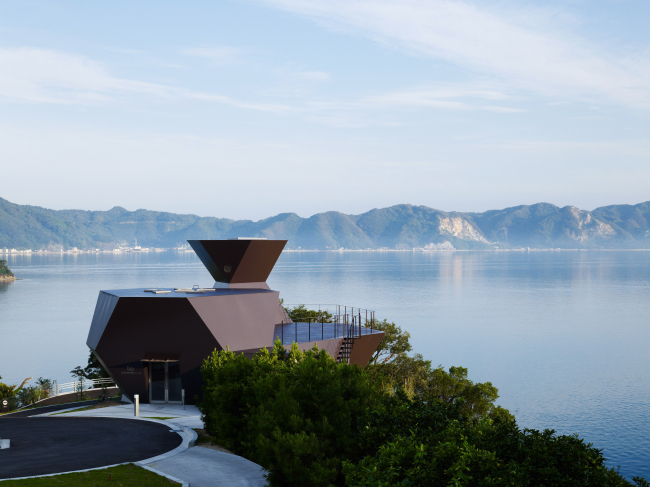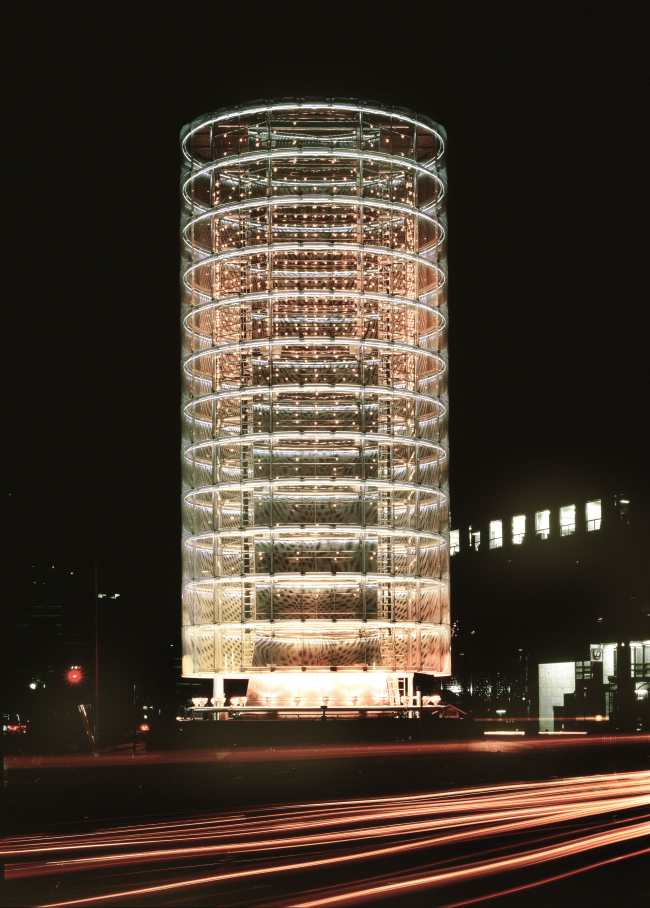 |
Toyo Ito Museum of Architecture, 2006-2011, in Imabari-shi, Ehime, Japan. ( AP-Yonhap News) |
LOS ANGELES (AP) ― Japanese architect Toyo Ito, whose buildings have been praised for their fluid beauty and balance between the physical and virtual world, has won the 2013 Pritzker Architecture Prize, the prize’s jury announced Sunday.
The 71-year-old architect joins such masters as Frank Gehry, I.M. Pei, Tadao Ando, Renzo Piano and Wang Su in receiving the honor that’s been called architecture’s Nobel Prize. Ito, the sixth Japanese architect to receive the prize, was recognized for the libraries, houses, theaters, offices and other buildings he has designed in Japan and other countries.
He accepted the honor by saying that whenever he’s done designing a building, he becomes “painfully aware of my own inadequacy, and it turns into energy to challenge the next project.’’
 |
Toyo Ito’s 1986 building, Tower of Winds, in Yokohama-shi, Japan. (AP-Yonhap News) |
“Therefore, I will never fix my architectural style and never be satisfied with my works,’’ he said in a statement.
“Toyo Ito’s architecture has improved the quality of both public and private spaces,’’ said U.S. Supreme Court Justice Stephen Breyer, who served on the Pritzker Prize jury.
“It has inspired many architects, critics and members of the general public alike. Along with all others involved with the Pritzker Prize, I am very pleased that he has received the award,’’ Breyer said in a statement.
Some of Ito’s notable creations include the curvaceous Municipal Funeral Hall in Gifu, Japan; the transparent Sendai Mediatheque library in Miyagi, Japan; the arch-filled Tama Art University Library in suburban Tokyo; the spiral White O residence in Marbella, Chile; and the angular 2002 Serpentine Gallery Pavilion in London.
“His buildings are complex, yet his high degree of synthesis means that his works attain a level of calmness, which ultimately allows the inhabitants to freely develop their life and activities in them,’’ said Chilean architect and Pritzker Prize jury member Alejandro Aravena.
Ito began his career at Kiyonori Kikutake & Associates after he graduated from Tokyo University in 1965. He founded his own architecture firm in 1971. His works have been exhibited in museums in the United States, England, Denmark, Italy, Chile and numerous cities in Japan.
Ito will receive a $100,000 grant and a bronze medallion at the formal Pritzker ceremony May 29 at the John F. Kennedy Presidential Library and Museum in Boston.






![[Exclusive] Hyundai Mobis eyes closer ties with BYD](http://res.heraldm.com/phpwas/restmb_idxmake.php?idx=644&simg=/content/image/2024/11/25/20241125050044_0.jpg)
![[Herald Review] 'Gangnam B-Side' combines social realism with masterful suspense, performance](http://res.heraldm.com/phpwas/restmb_idxmake.php?idx=644&simg=/content/image/2024/11/25/20241125050072_0.jpg)

